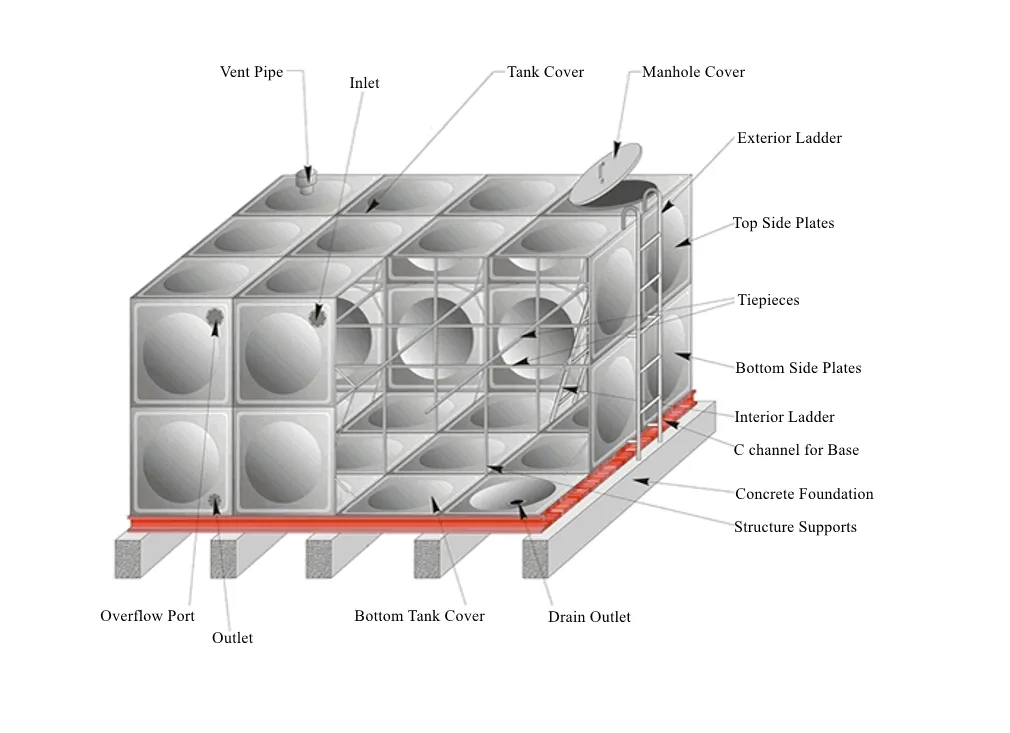loading...
- No. 9, Xingyuan South Street, Dongwaihuan Road, Zaoqiang County, Hengshui, Hebei, China
- admin@zjcomposites.com
- +86 15097380338
- Welcome to visit our website!
Estimating the Price of FRP Grating Solutions and Their Long-Term Cost Benefits
Fiber Reinforced Plastic (FRP) grating has garnered widespread attention in various industrial sectors due to its remarkable properties such as high strength, low weight, corrosion resistance, and durability. However, one crucial aspect that influences the adoption of this material is its cost. Understanding the cost dynamics associated with FRP grating can help industry players make informed decisions and optimize their expenditure effectively.
At the outset, it is essential to recognize that the initial cost of FRP grating is generally higher than traditional materials like steel or aluminum. This higher upfront expenditure often comes as a barrier for some organizations, particularly those with tight budgets. Nevertheless, when analyzing the cost of FRP grating, it is paramount to adopt a holistic perspective that factors in long-term benefits, lifecycle costs, and potential savings over time.
.
Another noteworthy consideration is the ease of installation associated with FRP grating. Due to its lightweight nature, FRP grating is easier to handle, cut, and fit compared to heavier materials like steel. This property not only reduces labor costs during installation but also minimizes the need for heavy lifting equipment, thereby further curtailing expenditures. Additionally, the ease of installation can lead to decreased project completion times, which can be a significant advantage in terms of overall project management and cost control.
frp grating cost

Moreover, the durability and longevity of FRP grating cannot be overstated. In environments that are harsh or subject to extreme conditions, such as chemical plants, wastewater treatment facilities, and offshore platforms, FRP grating outperforms traditional materials in terms of lifespan. The long-term durability of FRP grating means fewer replacements and lower total ownership costs, further justifying the higher initial outlay.
Furthermore, the environmental benefits associated with FRP grating can indirectly contribute to cost savings as well. FRP materials are typically environmentally friendly and can be produced using sustainable practices. Companies that prioritize sustainability and seek to reduce their carbon footprint may find additional value in choosing FRP grating, as it aligns with their corporate social responsibility goals and can potentially lead to favorable public perception and compliance with environmental regulations.
In conclusion, while the initial cost of FRP grating may be higher compared to conventional materials, a comprehensive analysis that includes factors such as maintenance savings, ease of installation, long-term durability, and environmental benefits illustrates the cost-effectiveness of this material over its lifespan. By considering these aspects, industry stakeholders can make better-informed decisions, ensuring that their investments in FRP grating yield substantial returns in terms of performance, longevity, and financial efficiency.
-
The Expansive Industrial Reign of FRP Pressure VesselsNewsAug.22,2025
-
Manufacturing Premium FRP Square Pipes for Global Wholesale ExcellenceNewsAug.22,2025
-
Strategic Applications for FRP Grating SolutionsNewsAug.22,2025
-
Material Science Forging GRP Water Tank LongevityNewsAug.22,2025
-
The Engineered Excellence: Material Science Behind FRP Railing SystemsNewsAug.22,2025
-
How Digital Pultrusion Revolutionizes FRP Profile WholesalingNewsAug.22,2025
-
The Rise of FRP Profiles: Strong, Lightweight, and Built to LastNewsJul.14,2025
